The Kenwood KD-2055 is one of Kenwood’s other synthetic composite decks. Think of it as the belt-driven cousin of the famous Kenwood KD-500/550 and KD-600/650 direct-drive machines.
The KD-2055, also found somewhat confusingly designated as a KP-2055, is a belt-drive turntable from Kenwood, featuring the same Anti Resonance Compression Base (ARCB) proprietary synthetic chassis as its more famous relatives. The KD-2055 features a fixed tonearm and some other automated features.
Readers will know just how much I love these decks and have written about them over the years. You can read much more about the other Kenwood ARCB decks in my posts here, here, here, here and here.
If you look at the photos below and compare the design to the KD-500/550 and KD-600/650, you’ll see immediately that the chassis design is very similar across the range of decks. The ARCB material is injection-moulded to create the ribs and structures we see in these chassis. Various boards and parts are secured with captive brass fittings because the ARCB is brittle and not suitable for tapping.
The issues with this particular deck related to the arm-return mechanism, the awful cartridge someone had installed and the need for a new belt. The deck was easily repaired and belongs in a class of ‘sleepers’ – decks that perform well, but are less popular than others of the same era.
Kenwood KD-2055 Specifications
Courtesy of Vinyl Engine
Drive: belt-drive system
Motor: 4-pole synchronous
Platter: 30cm aluminium alloy die-cast
Speeds: 33.33 and 45rpm
Wow and flutter: less than 0.06% WRMS
Signal-to-noise ratio: more than 50dB
Tonearm: static balance type, s-shaped pipe arm, EIA plug-in connector
Effective length: 215mm
Overhang: 9.5mm
Stylus pressure range: 0 to 3g
Usable cartridge range: 4 to 13g
Dimensions: 480 x 363 x 146mm
Weight: 11.7kg
Service & Repair
Some of these decks are getting quite noisy by this age and I’ve developed a repair process for re-mounting the motor on new rubber bearings that I supply. This process works well to quieten down mechanically noisy decks, along with the usual synthetic lubricants and careful attention to detail like fastener torque etc.










Discover more from LiQUiD AUDiO
Subscribe to get the latest posts sent to your email.

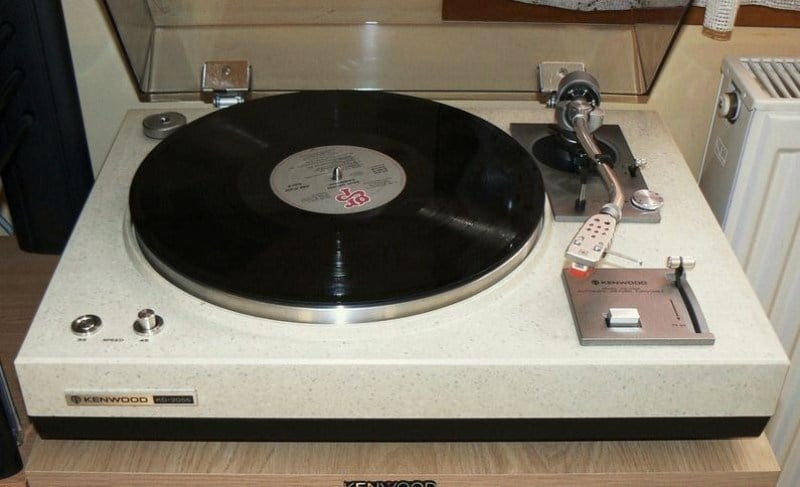
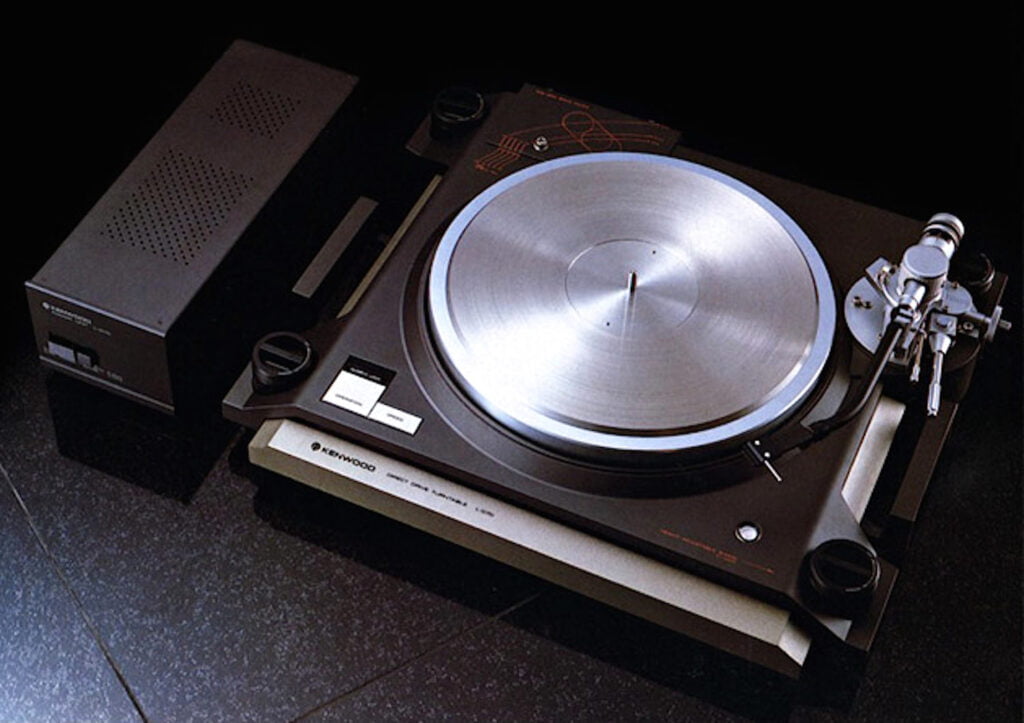
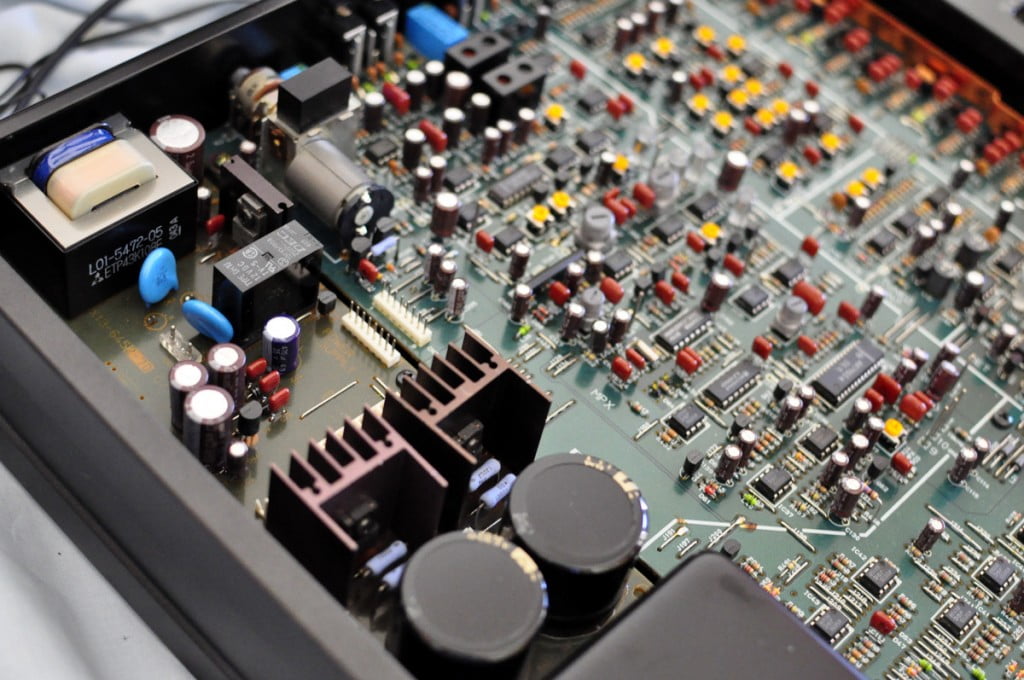
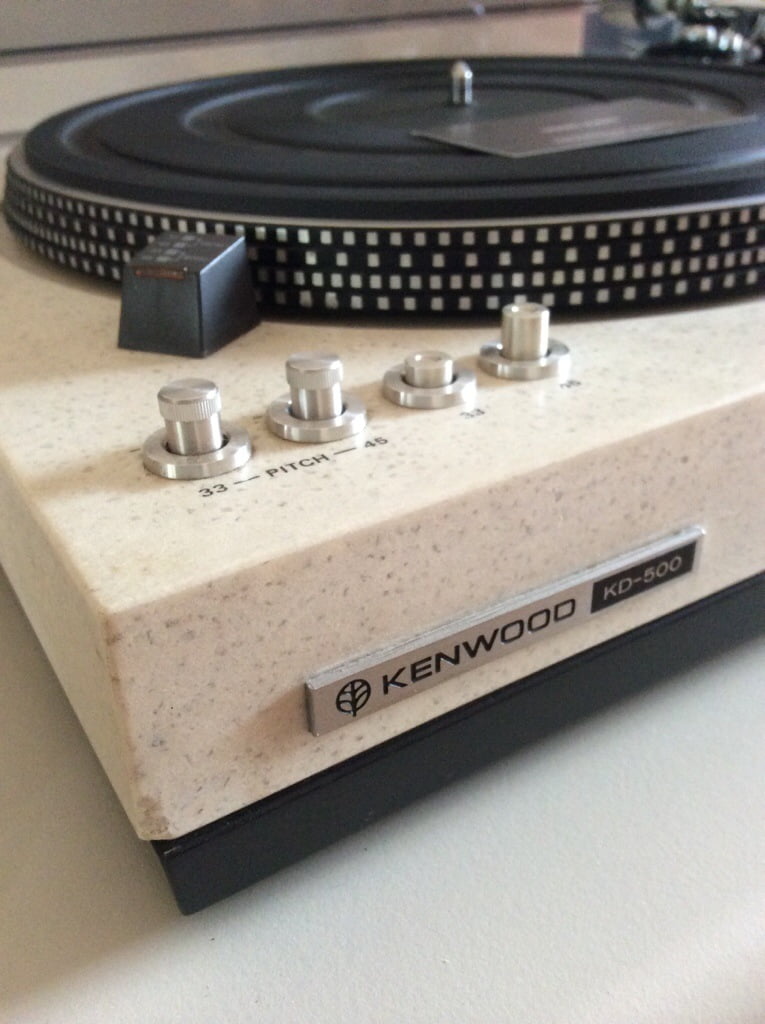
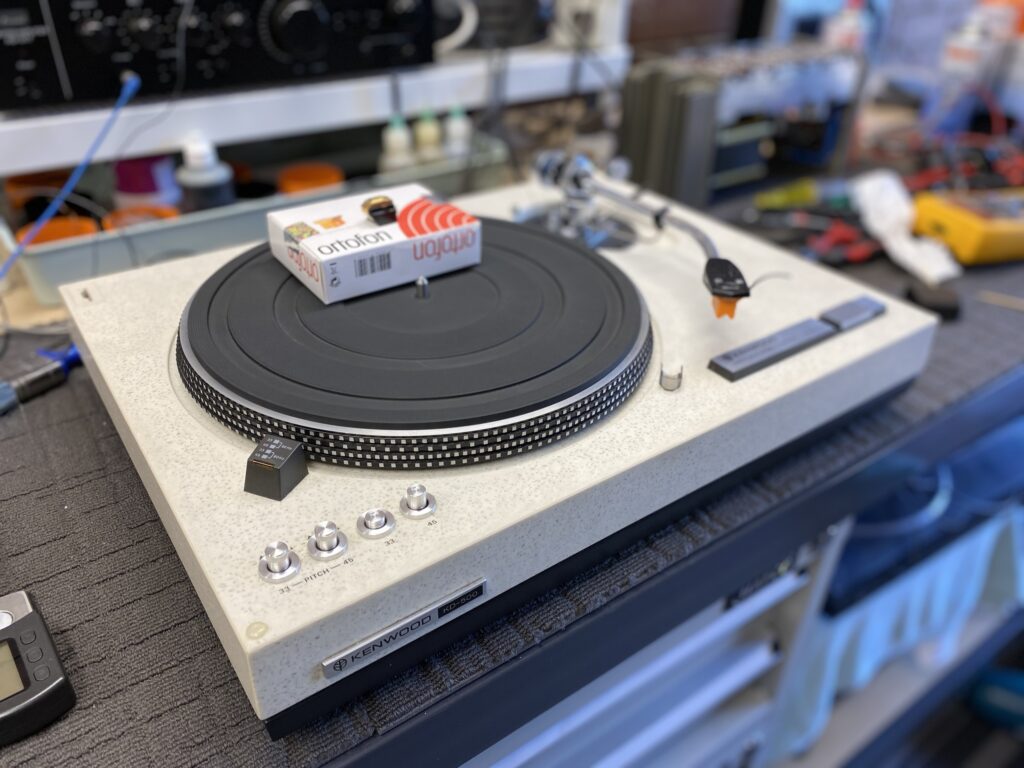
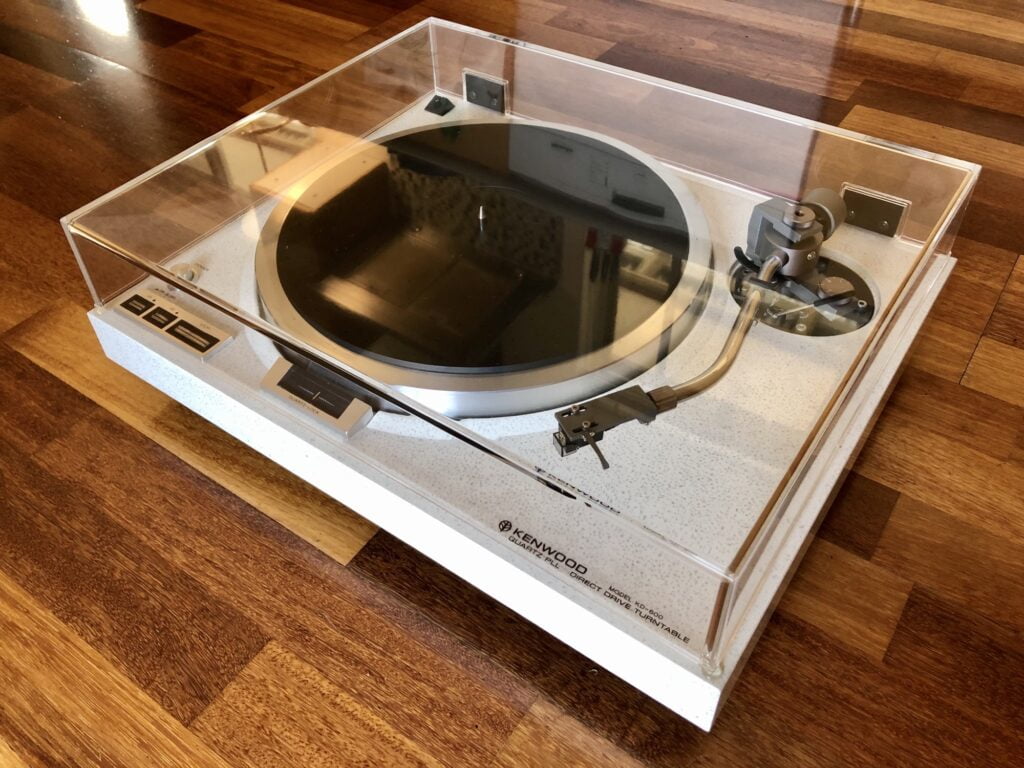
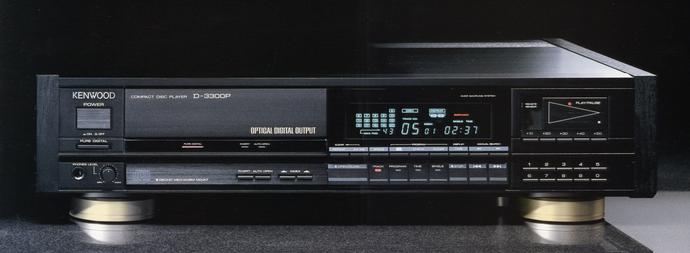
Love reading of these restoration gigs. I had completely forgotten about the marble Kenwoods and what objects of desire they were, way back in my youth. Now I can afford one, and I just have to be patient until one appears on the market in restore-worthy condition! You didn’t mention what cartridge you replaced the nasty one with, on the KP-2055. I would guess an Ortofon 2M once again? With their middle-ground weight, moderate tracking force, and moderate compliance, they seem to be ‘about right’ for most arms.
Hi Selwyn, glad you are enjoying the blog! Yes the ARCB Kenwoods really are excellent and I get to work on quite a few of them. I can’t recall what cartridge I installed on this one as the actual repair was a while ago, but you are correct about the 2M range and I fit a lot of them. Regards, Mike.
Hi Mike, I love your site! I’ve recently acquired one of these turntables & am having trouble banishing some hum & motor noise. In the picture of the underside I notice a grounding point with a green wire that mine doesn’t seem to have. Was this a fix for grounding issues you did to this table or do you have any suggestions for me to try otherwise? Thanks & keep up the awesome work & pictures!!
Hi Tim, thank you for the kind words! The earthing wire was already there, but you will find regional variations with all electronic equipment, depending on local earthing and other safety requirements. It certainly can help to have an earth reference with a deck like this, so by all means experiment a little, but just be careful. Something in the signal chain should be mains earthed, so experiment with your preamp and the connection between it and the turntable, this is often where ground loops and hum can become problematic. You’ll also want to establish whether it is hum or motor noise, as the solutions are quite different. Cheers, Mike.
Thanks for the reply sir! I’m fairly sure it’s an issue inside the player’s grounding points or possibly the power supply is going bad. I’ve done everything I can on the outside in alternative earthing techniques so I’m going to turn it over to a professional in my area as I’m barely an apprentice+ level speaker builder … the inside of this “fairly simple” turntable design is too intimidating & far too tiny for me to explore any further with my fat fingers.
Hi Mike,
Very interesting post. I was able to buy one of these gems for 30€. Needed a little bit of cleaning and a new belt, and it was running again.
One thing although concerns me a little:
The tonearm seems to be little sloppy at the base. You can hear a little rattling when moving it. I found just one post in another forum which also states some slackness in the base of the arm. So i wonder if it is “normal” with these decks.
Movement of the arm is normal (no friction), and also the antiskating seems to work. I also could not see any issues, when inspecting it a little closer . I was not able to find any screws to adjust for the slackness. I am more familiar with the Technics tonearms, which work differently. A tolerance like this on a technics arm would definitely be unusual.
May I ask you how your tonearms feels with regard to the tonarm base slackness? can you feel any tollerance when wiggeling the arm?
Greetings from the other side of the world.
tom
Hi Tom, thanks for your comment. Like almost all of the gear you see here, this was a customer deck and perhaps a thousand or more repairs ago, so I can’t recall exactly, but some freeplay here is quite normal. I’ve worked on another couple of these since then and there is always some freeplay in the arm bearings. Adjustment is possible, but generally not advisable from an end-user perspective, so I would just continue to use and enjoy the old girl! These are great decks and improve considerably with better cartridges, so this a something to consider.
Thank you for the post. I’ve had a few 2055s and just recently, a 3055. How do you get the automatics working properly? That seems to be the main thing I have seen go wrong with these.
Hi Byron, thanks for the comment and my pleasure re the post. There is no simple answer to your question unfortunately, it would take a few pages of trying to describe how I go through each of the deck mechanisms and clean, lubricate and adjust each bit. Often the clearances are out, foam degenerates, things become stuck and so on. It then comes down to experience and feel in working your way through the various parts to get them all running smoothly again. Much easier to show than describe!
I have discovered that the auto dampening oil gets everywhere, as well as into the plastic auto return arm that catches the pin on the platter. This arm requires friction to work properly. Removing and cleaning this arm and the post it sits on with soapy water helped my kd-2055.
Thanks for sharing your experience Richard! Thankfully, most 2055s I’ve worked on haven’t suffered from this, but certainly worth looking for if yours does.
Hello there, I have one gifted to me and I decided to gave it an overhaul as it was in really bad condition (power cable cut, RCA cables cut and other stuff). So far I managed to fix the auto return mechanism and soldered new power cable as well as RCA cable. Got new belt and new stylus Phanstiehl 629-DE (temporary) until I decide which cartridge to install (Grado G1 with Grado Green or Grado G2 with 8MZ or entirely something else).
Where I got stuck is which oil I have to use for spindle and what to use for motor? Can you share what oil you used? (I am located in Canada assuming the oil market is very similar)
Also have a slight problem with speed as it is just a bit faster. I got one FRB-25 and an FRB-27.3 and it runs more accurate with FRB-25 belt. It is too fast with FRB-27.3 belt. Just also wondering if there is another belt I should try?
Hope to get some help as it is my first time doing something like this.
You did excellent job there!
Greetings from Canada!
Hi Rado, thanks for commenting and glad you are enjoying the site. I don’t have a 2055 in front of me which makes it harder, but from memory, these have a grease bearing. I use special synthetic oils and greases, if it is a grease bearing, you need to use a thin, low friction grease, preferably PTFE based. For the motor, a lightweight machine oil works well, synthetic is nice. In terms of belts, I stock a wide range of sizes specced by belt size parameters, not retail parts with the part numbers you use here, so I cannot help with that. I suggest you buy a belt from a reputable source though (ie not eBay!) that is specified as being correct for the deck. It’s most important that the belt is not too tight.
Great article! I bought one of these beauties new! I still have it stowed away however there is a problem with the spindle bearing. It is worn to the point that the platter wobbles and actually drags on the edge. I was wondering if you have any idea where I might look for a replacement. I miss using this beast!
Hi Charles, no replacements for spindle bearings, though it is very unusual to find that level of wear. I’d need to see what’s going on in there but bearings can be refurbished or another donor deck may be used for parts.
Hi – I have a Kenwood KD-2000 that I’ve just inherited. The innards aren’t remarkably different. One question – the belt pulley motor – does it get oiled, and if so, with what? When I run it with the belt off it’s nearly silent, but when I have the belt on the capstan, it does have a low level mechanical hum, that feels louder than it should be, I think – and i’m wondering if it requires lubrication in that motor? Thanks!
Hi Bill, yes these and other motors should be lubricated periodically using a light mineral or synthetic machine oil. Many of these older decks, several Kenwoods in particular, suffer from degrading and perished motor suspension mounts resulting in excessive mechanical noise in the form of hum coupled through the chassis. I’ve developed a long-lasting replacement suspension for most of these machines but need the deck here to apply this fix.
Hi Mike! Great article! I recently completed a resto of one of these machines, equipped it with a Nagaoka MP-110 cartridge and the results are fantastic. One problem, It runs about 1.5% too fast when compared to a cd. The belt is new and specified for the machine. I had to fashion motor mounts and the motor sits true but the speed thing is bothering me. Any insights?? Thanks!
Hi David, glad you enjoyed the article! This is quite a complex topic and there are actually various reasons you might see a discrepancy between tracks played back on CD and your deck. The first thing one must do is use a reference method that purely measures the speed of your turntable rather than comparing it to another source with unknown speed accuracy. CDs and records are often mastered from different sources and comparing them doesn’t necessarily provide the right answer. A quality strobe disc or test record with test tones is the best way to go, that way we measure the speed of the deck with respect to a known reference. Once that’s done and we know for certain the deck is fast or slow, we can then look for the causes. These include belt thickness and diameter which are often incorrect, despite what a seller might say and various other various motor issues relating to the state of service, the drive pulley itself and so on. The spindle bearing should also be serviced with the correct lubricant.